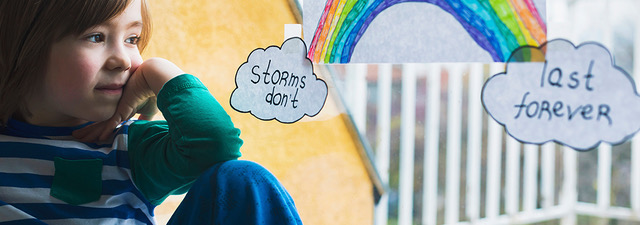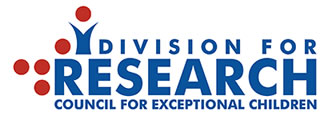
During these trying times when we are all sheltered at home, everyone is interested in what psychologists call resilience – which means doing okay in the face of difficult times. These days, parents all over the world are concerned about how they can build resilience in their own children. This blog provides answers to some important questions based on what developmental science has taught us.
What is resilience? There are two parts to the term resilience; the first is that the person is facing high levels of stress or challenging life events. The second is that they are doing reasonably well, that is, they’re able to complete tasks related to day-to-day functioning, and don’t develop significant mental health problems such as depression, anxiety, or substance abuse in the face of stress.
It is critical to remember that resilience is not a personality trait that you either have or don’t. Most people are able to bounce back after troubling times, if they have the right amount and combination of positive influences in their lives. Please see below for common questions and answers related to building resilience in response to the impact of COVID-19.
What are some practical steps that people can take to cope with stress associated with COVID-19? Continue to do the things that you may have done before the pandemic that brought you calmness, joy, and strength. This could be exercise, music, meditation, or prayer. Make sure you have specific times of the day set aside for these “winding down activities”. Get help from a friend to keep you motivated at continuing these activities, and whenever possible, try and do them together, virtually.
What if my usual coping skills aren’t helping?
“What if deep breathing or music still leave me upset?” First, don’t be hard on yourself. Know that right now, many of us feel sad or anxious even after trying familiar coping skills, simply because the stress levels are much higher. In addition to using coping skills you’ve previously found to be successful, you must regularly attend to sharing comfort, love, and support with others, and this can be done virtually and not just in person.
Eighty years of research have shown that resilience rests, most importantly, on relationships. These are relationships in which we feel a sense of safety and security, where we feel we will get comfort when we’re struggling. They provide us with critical psychological ‘safety nets’.
So – if resilience rests on relationships, what can we do to strengthen these? There are two parts to answering this question: One has to do with building positive parts of close relationships and the other concerns reducing negative parts. Let’s think of the positives first.
First, we need to make a conscious commitment to building up connections with our own “Go-to” people. These are people who make you feel accepted, liked, and safe. Maintaining regular, daily authentic connections with these Go-to’s is essential in giving you strength in challenging times
How to build up my network of Go-to’s? Many of us have lost touch with people with whom we once were close. Reach out to a dear school friend, or someone you liked and trusted at work. Tell them you were thinking about them with affection. Maybe you’ll find a great deal of appreciation from them – and maybe you’ll find the same affection coming back to you! Somebody has to get such connections back up and going, right? That person could be you.
What if I’m embarrassed to reach out for help, or feel like I shouldn’t “because others have it worse”? Many of us have trouble asking for support; here are a couple of reminders that might help get past that hump. One, everyone across the world is troubled to some degree given all that’s going on, so there’s no reason to feel shy if you show you’re hurting. Two, know that when people are asked for help, they often feel appreciated. Most of us feel good when others trust us enough to reach out for support.
What about “reducing the negatives”, in relationships? Turning next to ‘negative’ issues in close relationships, there’s a saying in psychology, “Bad is stronger than good”. This means that negative words or actions – those that are angry or hurtful – can affect people more strongly than positive things such as praise or helpfulness.
The important message here is that we need to actively work to minimize anger and hurt, especially at home. Being cooped up together can strain the best of relationships, and more so when we have different ways of coping. For example, some of us want more “togetherness” when we are anxious, others want more space. One person may feel better while discussing the latest news, but for others, this might greatly increase anxiety.
Try and understand things that increase feelings of stress in others at home, and communicate what are triggers for you. Take time to understand how each of you can best help others when they seem upset. Important: Have these conversations when family members are relatively calm; if someone is stressed or exhausted, the conversation should be had at another time.
As a parent, what should I do to help my child who’s stressed? Again, communication is very important; try and understand what’s on his or her mind, as it helps kids (and adults) to feel “heard”. Sometimes you can help just by listening with empathy, for example, when they’re feeling disappointment because activities/events were cancelled, or are experiencing general feelings of frustration or worry. Sometimes, you can help them figure out creative ways to connect with their own friends. This could be having a video get-together with classmates from school to play games, or for younger ones, “story time” for their class. Join with other parents or teachers from school, sharing ideas for group activities as it’s important for kids to remain connected with their friends.
Is there a “most important lesson” about how parents can build resilience in children? Yes, there is in fact one clear lesson that’s noted earlier in this blog and is worth repeating. For all adults wanting to promote children’s resilience through stressful times, the most important thing to ensure is that they themselves get the kind of love and support they want for their children. One way to get this going is to join (or start) a group with other people who have challenges similar to yours. We all can get much comfort from sharing with others and being “heard” with kindness and acceptance.
Do for others, and encourage kids to do the same. Finally, a big factor in fostering resilience is feeling that we have been helpful to others and made a difference in their lives. Help all in your family think about ways they might do this. For example, teens or tweens could virtually read stories to younger kids from school, and could offer tutoring to those with difficult assignments. Parents can coordinate ways to regularly thank and support teachers and school leaders as they work with the new distance learning. Adults as well as kids can organize virtual gatherings for their communities, so that no person feels completely alone for long stretches of time. Families might keep a diary of what they have each done to help others and share this out loud. Also share what each of them has been grateful for that day – this would include even the smallest acts of kindness and concern from others.
Now more than ever, we all need to keep love and authentic connections as a top priority in our everyday lives. This remains the key to resilience, among kids and adults alike.
Resources
PsychHub
https://psychhub.com/covid-19/
American Psychological Association (APA)
https://www.apa.org/topics/covid-19/index#parenting
https://www.apa.org/topics/covid-19/local-mental-health
Child Mind Institute
https://childmind.org/article/the-power-of-mindfulness/
https://childmind.org/article/coronavirus-parenting-managing-anger-and-frustration/
Luthar, S. S. (May 8, 2020). Fostering Resilience among Parents and Children. https://infoaboutkids.org/blog/fostering-resilience-among-parents-and-children
















